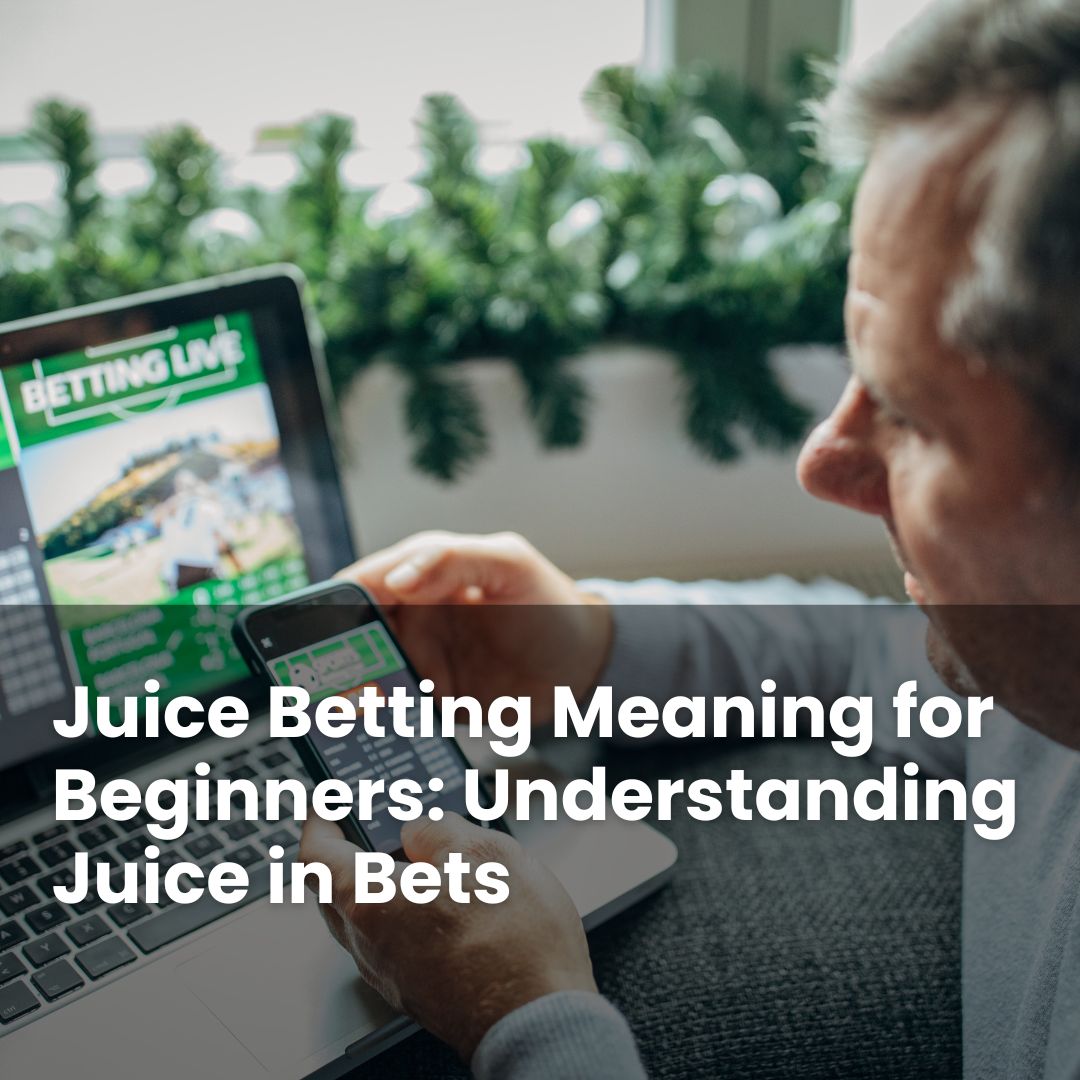If you are new to sports betting, you will soon come across the term juice. It might affect what you get paid if you place a successful bet, yet it is not always explained clearly.
This blog post breaks down what juice means, how it shows up in your returns, why bookmakers build it into prices, and how it works in point spread and moneyline markets. There are also a few common myths cleared up along the way.
By the end, the idea should feel straightforward, so you might read prices with more understanding and know what is built into them.
What Juice Means in Sports Betting
In sports betting, juice is the bookmaker’s built‑in fee for taking a bet. You might also hear it called vig or vigorish. It is not a separate charge added at checkout; it is included in the odds you see.
Because juice is part of the price, the return offered is a little lower than it would be at fair odds, where no fee is included. Bookmakers use this margin to cover costs and to balance their books across many events, so they aim to earn consistently rather than rely on a single match.
Put simply, when a bet wins, the return you receive already reflects the bookmaker’s deduction. The concept is the same whether you back a favourite or an underdog, a spread or a moneyline. So, how does that show up in your payout?
How Does Juice Affect Your Winnings?
Juice reduces the amount you might win compared with fair odds. The price looks close to even on both sides of a market, but the small tilt towards the bookmaker means the combined probabilities in the prices add up to more than 100 percent. That extra slice is the margin.
In practice, this means your break‑even rate has to be a little higher than the true chance of your selections winning. Over many bets, the margin makes it harder to come out level unless you might find better prices or more accurate reads than the market. The worked examples below show how this plays out with familiar odds.
With that in mind, it helps to understand why the fee is there in the first place.
Discover The Best Online Casinos
Browse our list of top-recommended casino sites, read reviews from real players & be the first to get access to the latest casino bonuses
Why Do Bookmakers Charge Juice?
Bookmakers charge juice to run the service and manage exposure. The margin helps cover operating costs, data and staffing, and it gives them a buffer so they are not relying on the result of any one event.
It also helps balance the book. By nudging prices, a bookmaker might encourage more bets on one side and fewer on the other, aiming to keep potential payouts reasonable. Sometimes, they move the point spread or totals line, and other times they keep the line steady and adjust the price. Either way, the juice is the lever that keeps the market functioning.
Now, to see what this looks like in practice, it is easiest to walk through a couple of short examples.
Examples of Juice in Point Spread and Moneyline Bets
In a point spread market, both sides are often shown at 10/11. If you stake £11 on a team at 10/11 and it wins, you make £10 profit and receive £21 back in total. The £1 difference between stake and profit reflects the juice. Look at both sides together and you will notice the implied probabilities add up to more than 100 percent, which is the margin.
For a moneyline with two evenly matched teams, you might expect both to be 1/1. In reality, both could be priced at 10/11 instead. Back either side and a winning £11 bet returns £21, again showing the fee built into the market. If one team is a slight favourite, you might see something like 8/11 on the favourite and 6/5 on the other side. Add up the implied probabilities from those two prices and the total will still be over 100 percent, which is how the bookmaker’s edge appears in the odds.
Seeing it this way helps you compare prices more clearly and spot when one market offers a slightly smaller margin than another.
Because juice is included in prices, a few misunderstandings tend to crop up. Let’s tackle the most common ones next.
Common Misconceptions About Juice in Bets
A frequent myth is that juice is tacked on as an extra fee at checkout. It is not. The price you see already includes the bookmaker’s cut, so there is no separate payment on top of your stake.
Another misconception is that the level of juice is identical everywhere. Margins vary by event, market and operator, and they might change as betting patterns shift. That is why comparing prices might be helpful, especially on popular fixtures where competition can reduce the margin.
Some believe it is possible to avoid juice entirely by choosing certain bets. In practice, almost every bookmaker market includes a margin. Alternatives, such as betting exchanges, structure fees differently by charging commission on net winnings rather than building a margin into the price, but a cost still applies.
Understanding how juice works gives you a clearer view of what you are being offered and why a return might be lower than it first appears.
If you choose to bet, set firm limits and make use of responsible gambling tools to support responsible participation. Only wager what you might afford to lose, take regular breaks, and monitor your activity.
If you notice your betting is affecting other areas of your life, seek help from UK-licensed support services such as GamCare or GambleAware. Always remember that betting is for entertainment purposes and should not be relied upon as a source of income.





